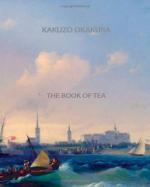
|
| Name: _________________________ | Period: ___________________ |
This test consists of 15 multiple choice questions and 5 short answer questions.
Multiple Choice Questions
1. Who brought the tea to Europe?
(a) Asians.
(b) Explorers.
(c) Immigrants.
(d) Merchants.
2. The person in #60 combined teaism with Confucianism, Taoism, and what other religion?
(a) Christianity.
(b) Islam.
(c) Hinduism.
(d) Buddhism.
3. Have Asians in turn developed the same for this culture?
(a) Not at first.
(b) At first.
(c) No.
(d) Yes.
4. The book also discusses well-known tea drinkers from history, and_________ methods of tea drinking which are to be avoided.
(a) "Disgusting."
(b) "Ugly."
(c) "Gross."
(d) "Vulgar."
5. The chief contribution of Taoism to Asiatic life is what?
(a) Peace.
(b) Tea.
(c) Communal living.
(d) Aesthetic theory.
6. When was tea first brought to Europe?
(a) The late-1400s.
(b) The late-1500s.
(c) The late-1300s.
(d) The late-1200s.
7. For what was tea praised?
(a) Its abilities to reduce stress.
(b) Being inexpensive, medicinal, and tasting good.
(c) Its abilities to grow in all climates.
(d) Its abilities to reduce fatigue, empower the soul, and repair eyesight.
8. What does the "religion of aestheticism" celebrate?
(a) The beautiful, the pure, and the harmonious.
(b) The colorful and bright.
(c) That which is in unity.
(d) The peaceful and muted.
9. What was the name of the book he wrote?
(a) Ching Ching.
(b) Ch'a Ching.
(c) Chong Kim.
(d) Chin Chan.
10. What has been beneficial to this "religion of aestheticism?"
(a) Japan's influence on the continent.
(b) Japan's isolation.
(c) Japan's Buddhist beliefs.
(d) Japan's connection with China.
11. This imagery is reflected in many arts, such as the martial art of ____________ which emphasizes absorbing the enemy's blows in order to exhaust him.
(a) Tai-Kwan-Do.
(b) Kenpo.
(c) Jiu-jitsu.
(d) Karate.
12. The editor sees ___________ distinct sides of Okakura which he would alternately exhibit.
(a) Three.
(b) Six.
(c) Five.
(d) Four.
13. It is said that a man named Kwanyin presented to his master Lao Tzu tea in what?
(a) The first known tea ceremony.
(b) A large tea ceremony.
(c) A large tea cup.
(d) One of the first tea ceremonies.
14. What era followed this era?
(a) The Creamed Tea era.
(b) The Whipped Tea era.
(c) The Boiled Tea.
(d) The Steamed Tea era.
15. Okakura could be brilliant but also ________________; visionary but suffering from cultural myopia, arrogant and pedantic but sentimental.
(a) Unintelligent.
(b) Ignorant.
(c) Infantile.
(d) Unsure.
Short Answer Questions
1. In what century was a man named Lu Wu born?
2. What do Taoists think about organized religion?
3. The West may never truly _______________ the East.
4. What is another side?
5. For whom did tea became a favorite?
|
This section contains 410 words (approx. 2 pages at 300 words per page) |

|




